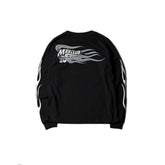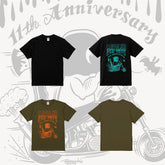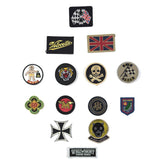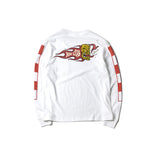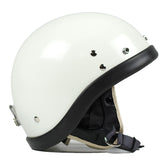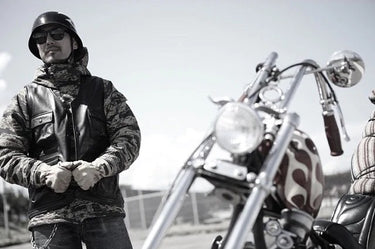A lucky Nazi swastika?

From our specially made swastika pendants in 2015, to the swastika printed works introduced by Chooke and Sunku from the brand, to this year’s denim series reproduced by CxTxM for Taiwanese friends, and to West Ride’s quite a few swastika-marked items this season. With the use of Swastika, it can be said that Swastika’s visibility is getting higher and higher!
Although Swastika was banned by the Allied Powers and Germany after World War II, the story and value of thousands of years of history should not be abandoned. Friends who do not know much about Swastika are welcome to refer to our previous article - Swastika . In this article, we will also use our introduction to Indian and American culture to introduce you to a brief history of this beautiful, peaceful, lucky and sacred Swastika.
 ( via/ arizona100.blogspot )
( via/ arizona100.blogspot )
There is a saying about the swastika in the Navajo people. It represents the meaning of The Whirling Log (Tsil-ol-ni). It is mainly stated in early ritual sand paintings that heroes from mythology ride on logs and follow the underwater. He escaped from the whirlpool, and this rotating symbol was then simplified into the shape of a swastika, which has since taken on the symbolic meaning of "luck". (For the four-dimensional and four-quadrant worldview expressed in the picture above, interested friends can also refer to our other article: Ketoh )

( via / National Park Service photo, By 1896, the swastika appeared in Navajo weaving. )
At the end of the 16th century, after the Navajo people and the Spaniards acquired textile technology to replace fur, they integrated their own culture and designs to create their own unique weaving technology.

( via / DT Mallonee of Phoenix for Peach Springs Trading Post )
Around the 1880s, with the opening of the railroad in the western United States, Fred Harvey opened the Harvey House next to the railroad station. It combined the features of a restaurant, a hotel and a specialty store, and successfully promoted Indian handicrafts to the endless stream of tourists from the east coast. guest. At that time, some stores even used swastikas on their signboards to attract tourists, because as souvenirs, Swastika blankets or silver products with the meaning of "Good Luck" were quite popular.

( via/ arizona100.blogspot.tw )
After 1920, with the construction of roads and the popularization of automobiles, road signs with swastikas and arrows could be seen near some indigenous territories, such as along the Arizona Interstate Highway. In addition to promoting tourism, There are also good intentions with congratulations.

( via/svasticross.blogspot.com )
In the 1935s, Wigwam Villages also brought a unique hotel architecture, a cement hotel inspired by the shape of an Indian tent, and of course there was the iconic Indian swastika symbol on it.

( This Curt Teich postcard was published in 1943 )
As the United States officially entered World War II, the negative impression given by the German swastika prompted the Navajo and other tribes to sign a public pledge not to use the swastika on crafts. This is why blankets and silver jewelry with Swastika weaving totems are so expensive and hard to find in today’s vintage market, because not only were they prohibited from making them again after that, many people who originally owned Swastika handicrafts destroyed and discarded them. some!




